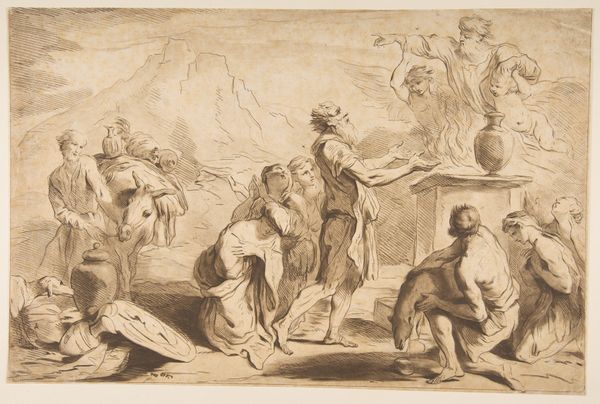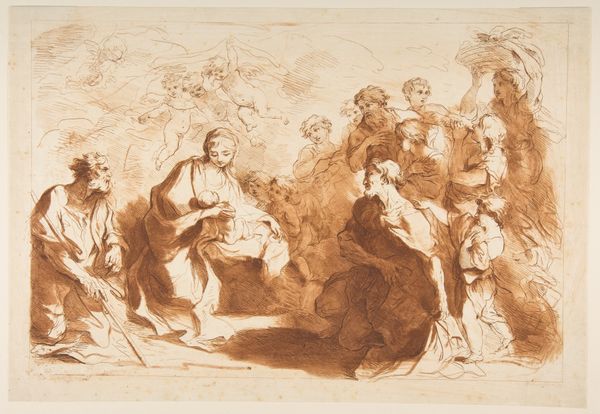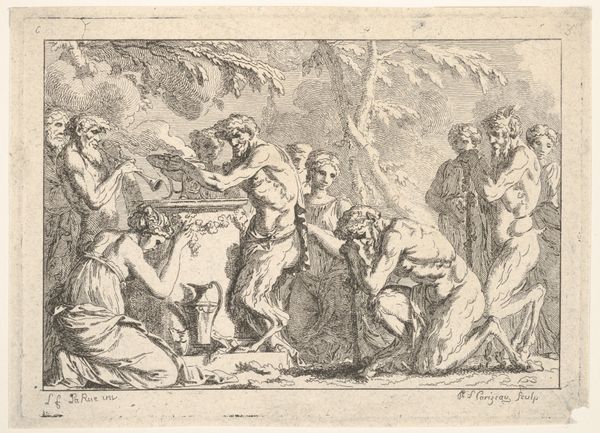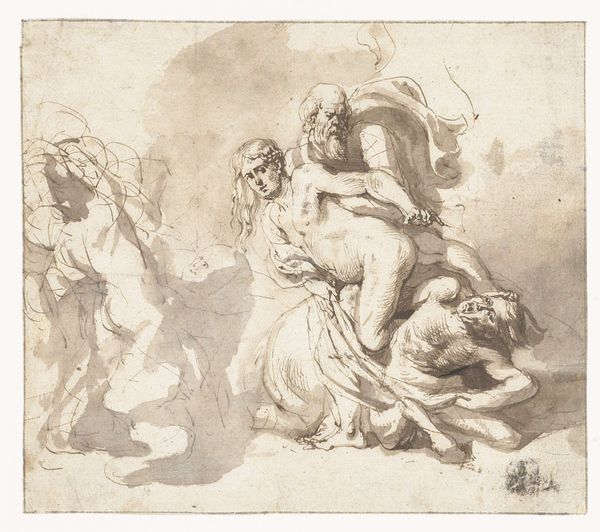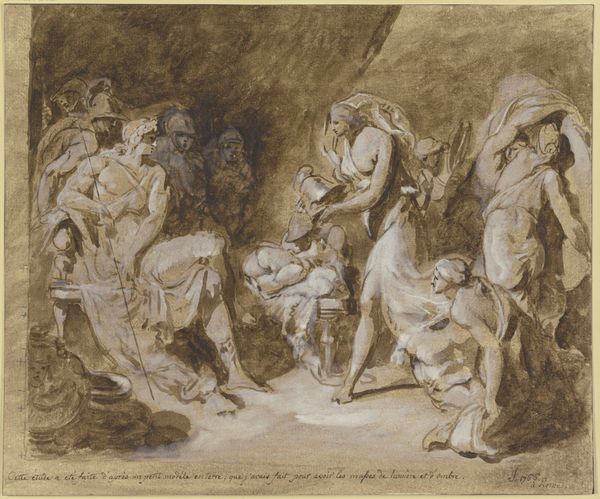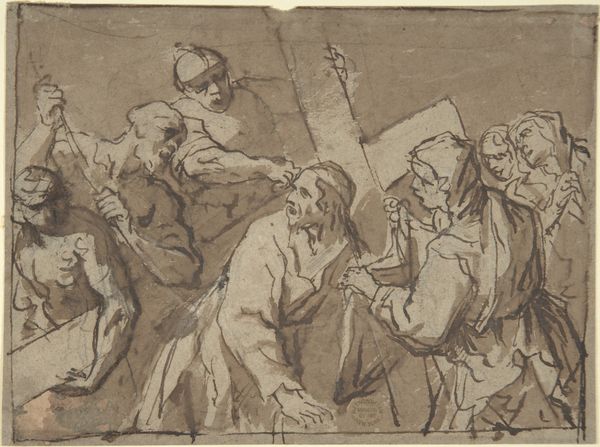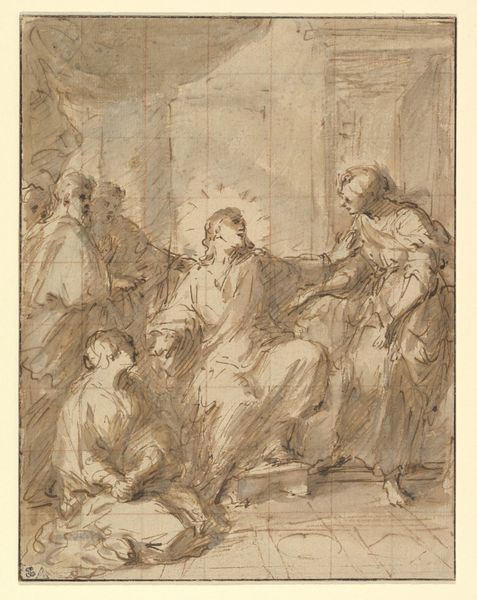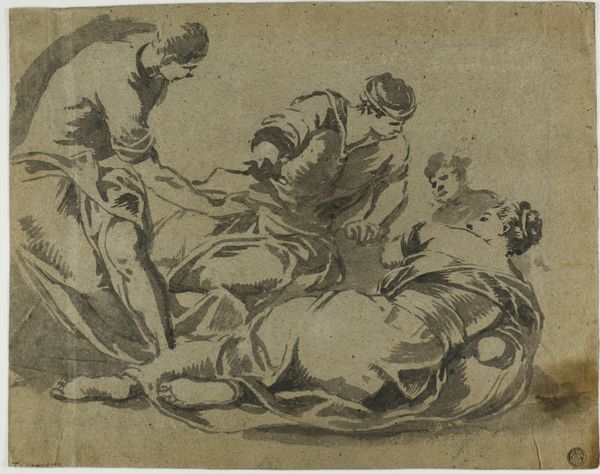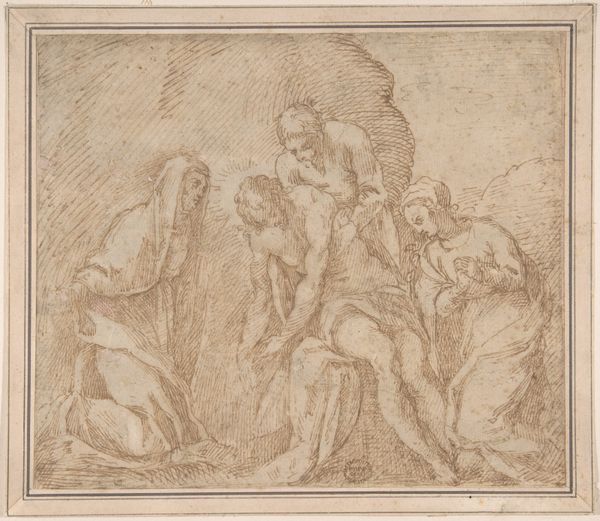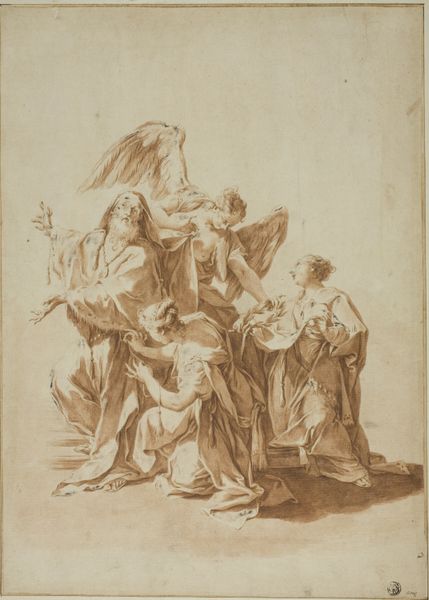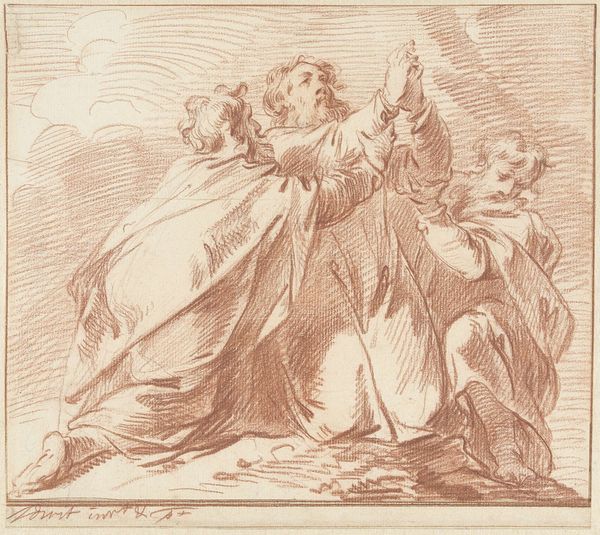
drawing, paper, ink, pen
#
drawing
#
narrative-art
#
baroque
#
figuration
#
paper
#
ink
#
pencil drawing
#
surrealism
#
pen
#
portrait drawing
#
history-painting
Dimensions: height 185 mm, width 237 mm
Copyright: Rijks Museum: Open Domain
Editor: This is a drawing titled "De H. Gregorius (?) in een grot," made with pen and brown ink on paper by Jan de Bisschop, sometime between 1648 and 1671. The figures within the cave, the stark contrast between light and shadow...it all creates a sense of drama and intrigue. What do you see in this piece? Curator: Indeed. Note the artist's sophisticated deployment of chiaroscuro, a hallmark of the Baroque. Observe how the light source, seemingly emanating from the unseen, sculpts the figures, accentuating their dynamism. The composition, a series of interlocking diagonals, directs the viewer's eye through the scene, building to a crescendo at the figure of perhaps Saint Gregory. Editor: The use of diagonals you pointed out - is that common in Baroque art? Curator: Frequently so, particularly to generate movement and emotion. Also consider the architectural rendering of the cave's interior, not photorealistic, but rather evoking the space. The formal relationship between figure and setting produces a dynamic tension, pushing the viewer's eye through foreground, midground and background. Is it "De H. Gregorius?" Possibly. It is less important than the artist’s expression of form. Editor: So it's not so much about who's depicted, but how the drawing is put together? The lines, the lights and shadows...? Curator: Precisely. De Bisschop masterfully manipulates these elements to convey a sense of dramatic narrative and psychological depth through compositional structures. Editor: That makes me look at the drawing with new eyes. It’s not just a scene; it's a careful arrangement of forms and light, all working together. Curator: A clear demonstration of the enduring power of visual language.
Comments
No comments
Be the first to comment and join the conversation on the ultimate creative platform.
